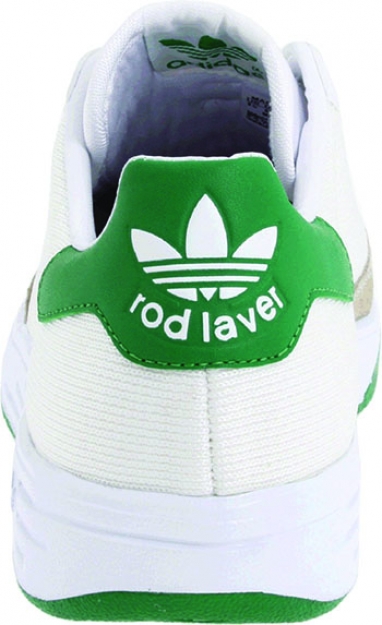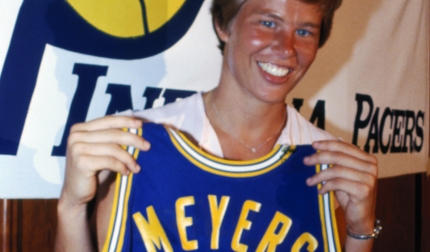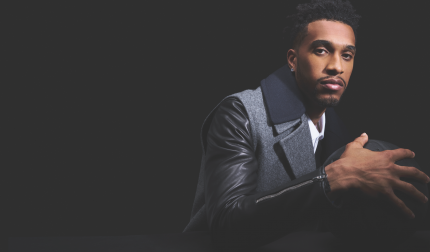You grew up in the Australian outback where your father would wake you at 2am and drive seven hours to play junior tournaments. Did your dad force you to do that?
[Laughs] No, I forced him to do it. He probably didn’t have time, but he made time. He was a truck driver; he opened a butcher’s shop, and he managed cattle properties. But we were a tennis family. My mother played; my dad played. We built a tennis court on the farm. There wasn’t much else to do on the weekends. Tennis was a chance for everyone to get together. That was how everybody got along back in those years.
What was so special about tennis? Why didn’t you play football or rugby or cricket?
You only needed two people to play tennis. Then, when I was eight or nine, I had a coach and that was the start of me getting better. His name was Charlie Hollis, and he and my dad were good mates. They would come home from work and drink rum and milk [laughs]. Then, on the weekends, my dad would take me to small towns around the country to play tournaments.
How did you get the nickname “Rocket”?
Another coach, Harry Hopman, was instrumental in that. I was from a place called Rockhampton, so “Rocket” started there. I was also a little lackadaisical in getting to the ball on the court, but I understood that I had to get there a little quicker. When all that gelled, Hopman called me “The Rocket.”
You won a lot of titles as an amateur before you turned professional in 1962. Was joining the pro ranks a big deal?
In some ways you could say there was no decision to be made. There was no way anyone was ever going to make any money as a tennis player as an amateur. When we were playing [amateur] Davis Cup tennis for Australia, we were making 25 shillings a day [approximately $5], and that was our fee for two weeks. I had been around the world a couple of times and made maybe a couple of thousand dollars each year. From 1958 through 1962, I could play the Italian championships, or the French, and I could maybe get $300 to $350 a week. That was to pay for meals, accommodation, and air fares to get you to the next town. That isn’t any way to live, unless you’re independently wealthy and have a family that can afford you. There was a whole group of people who said we have to turn pro – we don’t have any money.
So how did tennis players make money before the professional circuit?
The only way around it was to own a sports equipment store or sell insurance or something with name value. That made the decision for me. I was successful overseas, so I had a name that was valuable on the professional scene. After winning the Davis Cup in 1962, I decided to turn professional. The pros gave me a contract for $110,000 for three years of play. The Australian officials, and many in the amateur world, said it was a bad decision. They said I was letting Australia down—who would they get to play Davis Cup? But they were thinking of themselves and not thinking of me at all. Lamar Hunt formed the WCT circuit and said, “I have a million dollars, 20 tournaments, $50,000 purses, 32 players, go for it.” That opened the door, and everyone had to start putting some money up.
Besides getting paid, what was the biggest difference in turning pro?
It was a shock to the system playing someone like Lew Hoad or Ken Rosewall each night. That was a tough one. It was hard going. But after a year, I looked back and knew I had improved my game. You had to improve playing against those guys every night.
How much has the equipment changed since your day?
It is so much easier to play with the racquets today. That is the great thing about the sport. At a high level, it is just amazing what the players are doing with the new technology. But when you go down to the club, and people just want to hit a few tennis balls around, everyone can at least play and enjoy it. Before, it was always tough for people who didn’t have too much natural coordination.
You beat John Newcombe in the 1969 Wimbledon Final on the way to winning a historic second Grand Slam. Is it true you woke up the next morning in a bathtub wearing a tuxedo?
[Laughs]. Yes, well, that was a fairly big night. Reporters were calling on the phone to talk to me that morning, and I think my wife looked over at me and said to them, “Yes, he’s still out.” We had celebrated all over London that night.
Who as your biggest rival during your career?
I’d have to say Ken Rosewall. When I started off as a professional in 1963, I played, I think, 16 matches against Rosewall and only won a couple. There was Lew Hoad and also Roy Emerson, who I played in the finals of the French, Australian, and US Opens. I had a few rivalries.
Were you friends or rivals off court?
We were good friends, but when I walked on the court, Ken was an enemy. When I walked off the court, we shook hands and were back to normal again. What happens on the court doesn’t come into play once you’ve walked off. We would talk about matches that we played and say, “You were lucky on that point in the first set.” That was how all of us accepted the game.
Do you think you Rod Laver in 1968 could beat Roger Federer today?
No, I couldn’t beat Federer. I would certainly have to use a modern racquet to have any chance. The game changed almost overnight when they came up with the modern racquet. Today’s players start off not having to learn too much about the game. They immediately know how to play. They learn top spin so quickly. Back in our day, you couldn’t really make top spin out of a wooden racquet. I couldn’t play against Federer.
Andre Agassi has talked about the pain he went through sometimes just to get on the court. Were you affected that way?
Everybody has injuries. The other thing with the wooden racquet was that you only had so much to play with. The composite racquet allows you to do so much. The rallies they have today can go on for three or four sets. That is one of the big differences—the fitness the players have today. But I certainly had back injuries and tennis elbow. I had to put my elbow in warm water to heat it up just to walk on the court. Then I would come off and have to put ice on it. But I never had an injury where I had to stop playing.
Was there a moment when you thought, “It doesn’t get any better than this?”
To me, the biggest, most important tournament was Wimbledon. I had accepted that I would never play Wimbledon again when I turned pro. [Wimbledon allowed professional players to compete in 1967.] When I turned pro, had five years in the game, and I was back at Wimbledon in 1968. I thought, “Hey, I have done the full circle here.” I’d have to say that it doesn’t get any better than that. I was 31 at that stage and could still play. I remember thinking, “This is alright.”
How many pairs of Adidas Rod Laver tennis shoes do you have?
[Laughs] I spoke to Adidas a few days ago and said, “Hey, I’m out of my shoes!” I haven’t been playing tennis in them, but I use them to go down to the gym to work out. It has gone well. That contract was signed in 1970. It’s a 40-year contract!
Is that the longest-ever endorsement deal?
[Laughs] Well, I’m happy for someone to come and say “We beat you!” But Adidas has been pretty good to me. I think the shoe is selling more and more now than ever before.
Do you have any advice for young athletes?
Make every mark a winner when you’re out there. Don’t say that you will do it tomorrow. Each day goes by and you are losing something from somewhere if you’re not working on your game. All of it is important. But the main thing is to not get dejected when things aren’t working for you. Work through it.






